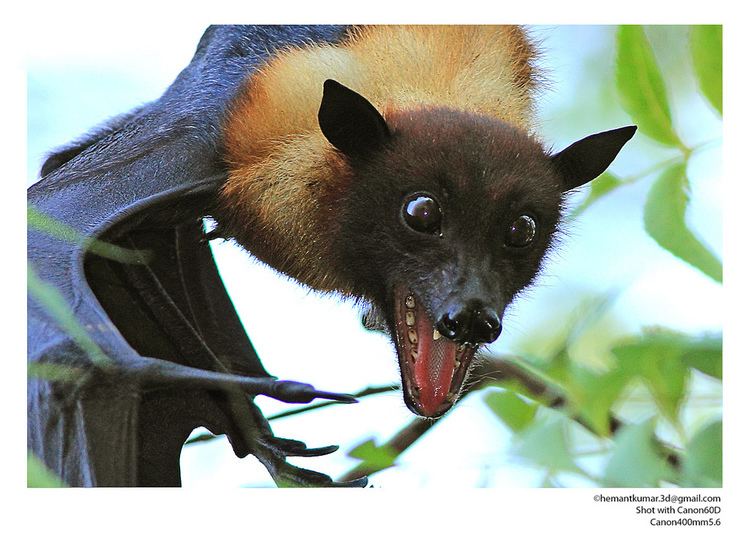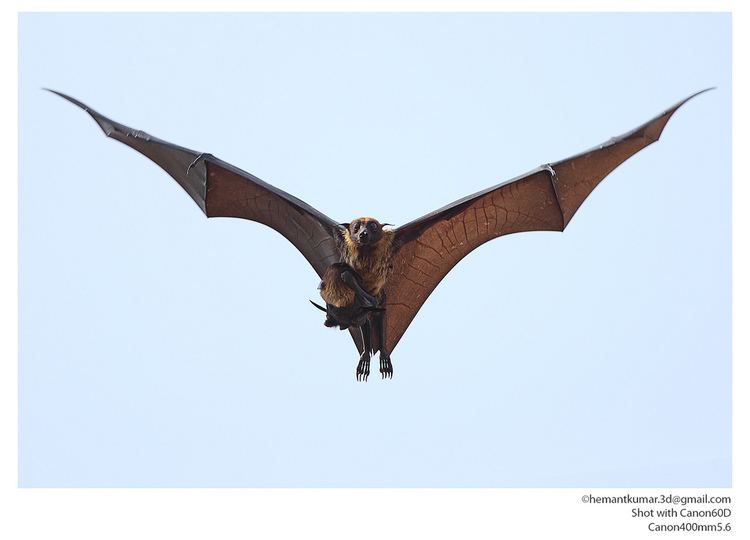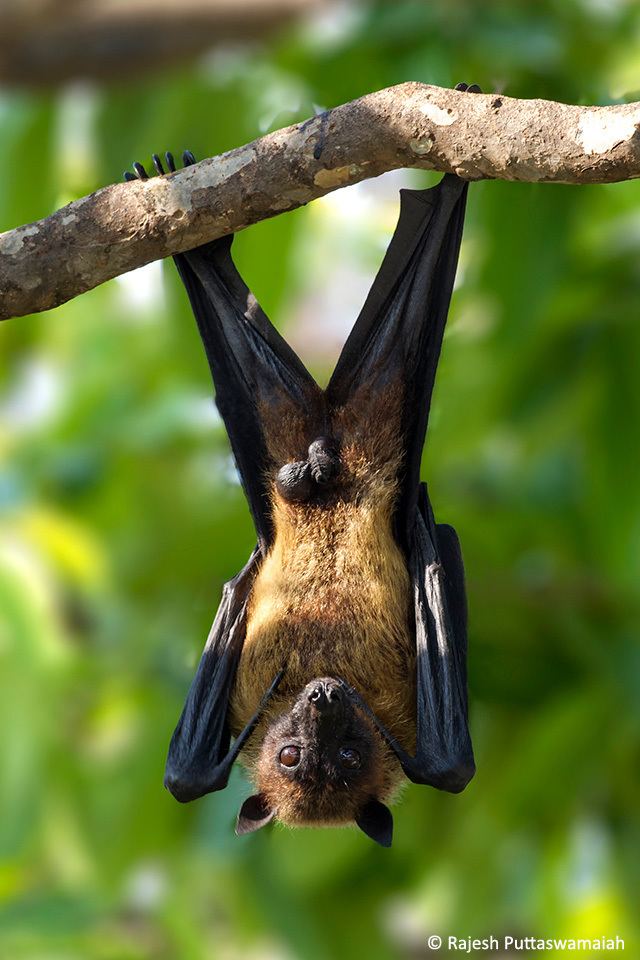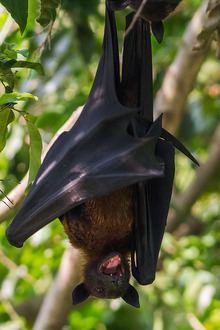Order Chiroptera Higher classification Flying foxes | Phylum Chordata Family Pteropodidae Rank Species | |
Similar Flying foxes, Megabat, Bat, Mammal, Large flying fox | ||
Bat likes to be clean indian flying fox
The Indian flying fox (Pteropus giganteus), also known as the greater Indian fruit bat, is a species of flying fox in the family Pteropodidae. It is nocturnal and feeds mainly on ripe fruits, such as mangoes and bananas, and nectar.
Contents
- Bat likes to be clean indian flying fox
- Indian flying fox greater indian fruit bat pteropus giganteus
- Distribution and habitat
- Feeding
- Reproduction
- Disease transmission
- Culture
- References

Indian flying fox greater indian fruit bat pteropus giganteus
Distribution and habitat

The Indian flying fox lives in tropical forests and swamps, near bodies of water. They also live on coastal islands, and it is theorized that ancestors migrated here long ago and found a liking to it, or were blown there and quickly forged a lifestyle. It is found in India, Bangladesh, India, Tibet, the Maldives, Nepal, Pakistan, and Sri Lanka. It is classified as Least concern due to its wide range and apparent adaptability.
Feeding

The Indian flying fox is frugivorous or nectarivorous, i.e., they eat fruits or lick nectar from flowers. At dusk, these bats forage for ripe fruit. While ingesting fruit, these bats expel waste that pollinates and disperse seeds.
Reproduction

Mating System: P. giganteus is a polygynandrous species, and breeds yearly from July to October. Births occur from February to May. Gestation period is typically 140 to 150 days. The average birth number is 1 to 2 pups. Among members of the genus Pteropus, pups are carried by the mother for the first few weeks of life, with weaning occurring around 5 months of age. Males do not participate in parental care. Young bats learn to fly at approximately 11 weeks of age. Reproductive maturity occurs at 1.5 years.
Disease transmission

Like other fruit bats, the Indian flying fox may be a natural reservoir for a number of diseases including members of the groups Henipavirus and Coronavirus. These can prove fatal to humans and domestic animals. Fruit bats are considered a delicacy by South Pacific Islanders as well as in Micronesia where, on the island of Guam, consumption has been suggested as a possible cause of Lytico-Bodig disease.
Culture
Known as මා වවුලා (maa wawula) in Sinhala.
